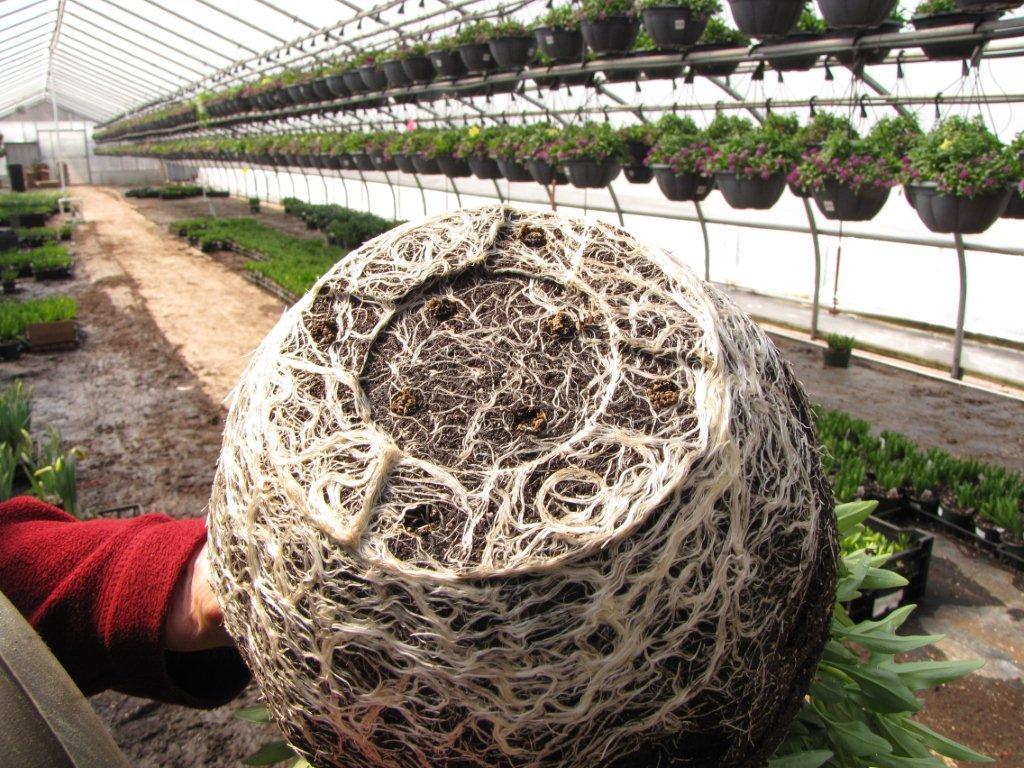
Plant health and biologicals for disease management
Biological control refers to the use of natural enemies to control pests and diseases. Biocontrol agents include predators and parasitoids (macroorganisms), as well as microorganisms (microbial biopesticides).
Biopesticides are “pesticides derived from natural materials,” according to the EPA, and are categorized according to the source or type of active component in the product. The biochemical pesticide group includes plant extracts like azadirachtin and minerals like potassium bicarbonate, while the microbial biopesticide group includes products based on living microbes, primarily fungi, bacteria and viruses.
Both groups contain products that are used for arthropod or disease management and have unique (often multiple) modes of action. The safety of the product allows them to be used alongside other biocontrol agents in integrated pest and disease management programs.
BIOFUNGICIDES
Microbial fungicides containing different species of fungi (e.g., Trichoderma spp.) or bacteria (e.g., Bacillus and Streptomyces spp.) are registered for prevention of soilborne diseases. The organisms work in various ways to protect plants by competing with pathogens for space and resources at the root surface. Production of metabolites from the microbes inhibit germination or growth of pathogens and some, like Trichoderma harzianum T22, can actively parasitize pathogens like Rhizoctonia.
Others activate plant defense pathways as they grow on the roots. However, not all Trichoderma or Bacillus spp. have these traits. Those in EPA-registered biofungicides have been specifically selected for their ability to protect plants against disease.
Products based on Bacillus and Streptomyces are registered for foliar diseases. These contain viable spores and bioactive metabolites (such as lipopeptides) produced by the bacteria during fermentation. The metabolites physically disrupt cell membranes of actively growing pathogens, causing the cells to collapse. A contrasting mode of action is seen with the saprophytic fungus Ulocladium oudemansii (BotryStop). It colonizes dead, damaged and senescing plant tissues, aggressively outcompeting Botrytis for these resources and prevents the disease from establishing in the crop.

Biochemical biofungicides include botanical extracts, such as those derived from giant knotweed (Regalia), which induce plant resistance. When applied to plants, these stimulate in-plant production of compounds that inhibit plant pathogens. Potassium bicarbonatebased biofungicides (e.g., MilStop SP) have a physical mode of action, desiccating spores and actively growing mycelia of fungi like powdery mildew and Botrytis on plant surfaces.
Understanding how and where different biofungicides work is important to ensure selection of the right product for disease control. Knowing the mode of action gives you the knowledge on the how, when and where to apply and is critical to successful disease management. And last, when using biofungicides within a production system, consider how they interact with other biological and chemical inputs to ensure compatibility of all components.
BIOINSECTICIDES AND MACROORGANISMS
Bioinsecticides are biological substances that manage arthropod pests. Common microbial insecticides include products containing the fungi Beauveria, Cordyceps or Metarhizium, living bacterial agents such as Bacillus thuringiensis or heat-killed organisms such as Burkholderia.
Biochemical bioinsecticides include active ingredients such as azadirachtin, botanical essence/oils such as rosemary and non-specific mechanical disruptors such as diatomaceous earth (abrasion) or horticulture mineral oils (suffocation). Most work on contact so it is important to get good coverage.
Macroorganisms include insects, mites and nematodes. They are available as eggs, larvae, pupae, adults or infective juveniles (nematodes), depending on the beneficial organism. Just like any management strategy, macroorganisms need to be used in an integrated program with other macroorganisms, bioinsecticides and/or synthetic insecticides.
Since pesticides are designed to kill, it is important to understand biopesticide and macroorganism compatibility. This can be complex, but there are several useful websites and other resources that can help.

Let’s consider how to put a program together, using Western flower thrips as an example. Start clean, by dipping incoming rooted and unrooted cuttings. Dips kill insects and mites on propagative material and can reduce pesticide residues.
Amblyseius cucumeris (predatory mite) consumes freshly hatched thrips and their introduction at propagation controls population growth. However, this mite only feeds on the young larvae so it is important to target other life stages (e.g., thrips pupae) with soil predators such as Dalotia coriaria (rove beetle), Stratiolaelaps scimitus (predatory soil mite) and Steinernema feltiae (beneficial nematode). Finally, the generalist predator, Orius insidiosus (minute pirate bug), will consume adult and larval thrips, as well as other pest organisms.
The bioprogram is complemented by periodic applications of biopesticides that are compatible with these predators. Selective use of synthetic insecticides may be required at times of year when pest populations grow rapidly or can be applied prior to shipping to clean up plants if necessary. Ideally, products should be compatible with macroorganisms and risks can be further reduced through strategic timing or placement of sprays.








 Video Library
Video Library 

















